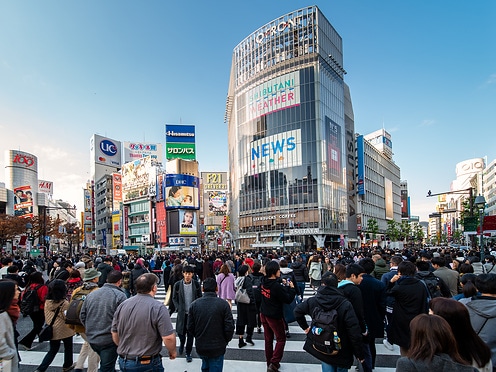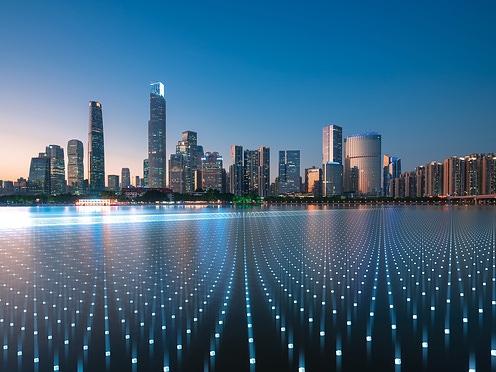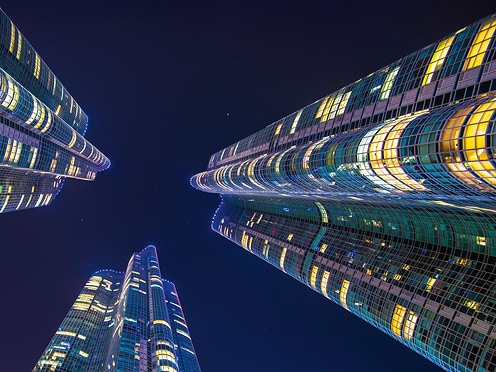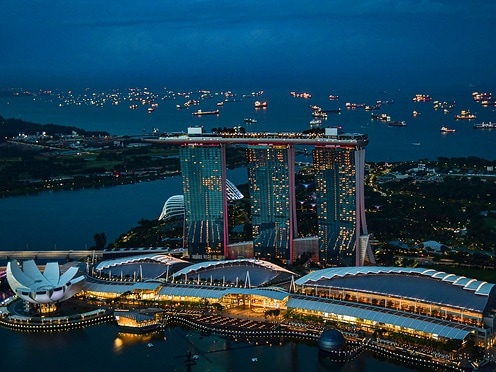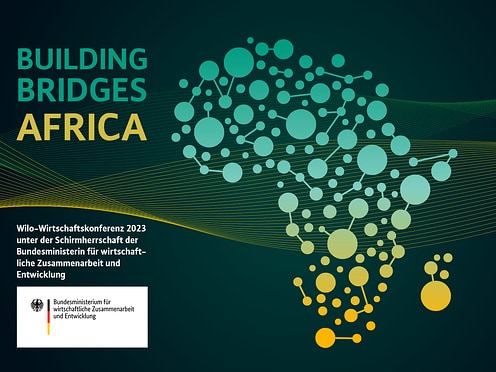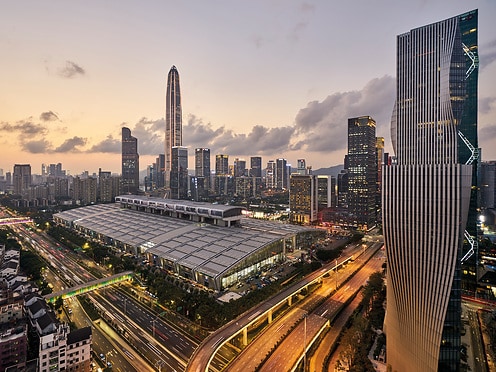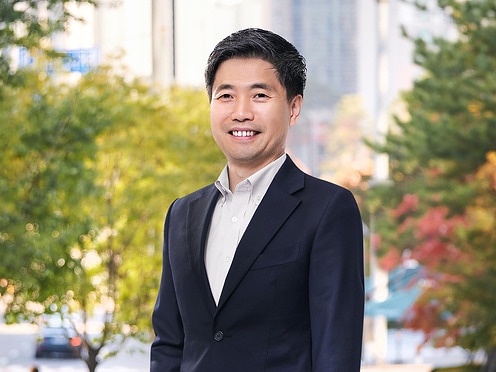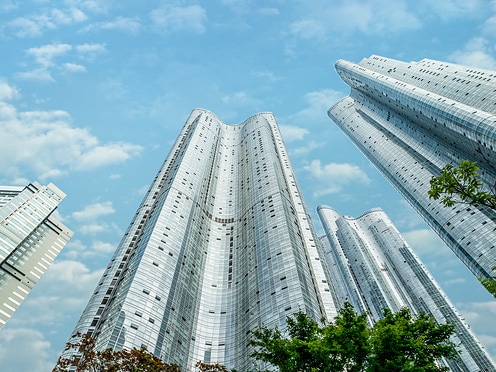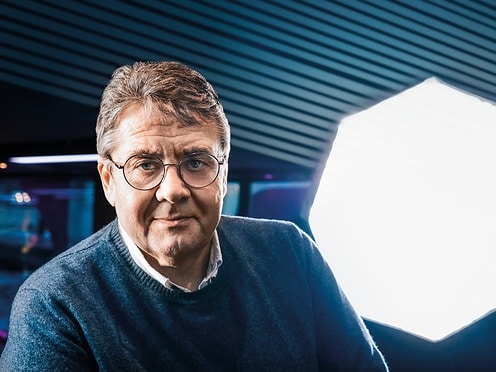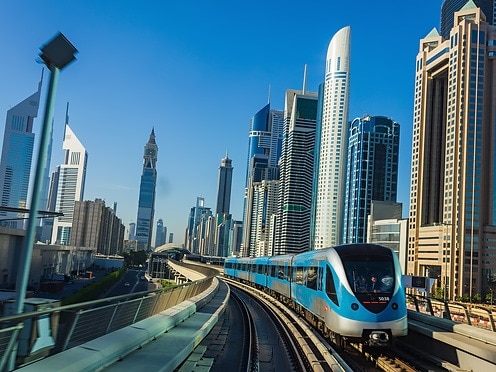Cities of the future
This article features:
Over the past two centuries, urbanisation has accelerated more and more in the wake of industrialisation. Since 2008, the number of people living in cities has surpassed the rural population. This megatrend is unabated. According to a United Nations estimate, more than 5 billion people will live in cities by 2030. That will be around 60 per cent of the world's population.
This text is part of Wilo's annual report 2022.

Four Metropolises of tomorrow
Urbanisation provides people with new opportunities and possibilities. At the same time, however, it is also accompanied by major social, economic and environmental challenges. Answers to the question of how these challenges can be successfully overcome in the future are to be provided by a series of completely new cities. They are springing up around the globe and are not only intended to relieve existing metropolitan areas, but also to demonstrate how cities can function in the future with innovative concepts. Learn more about four new city developments that aim to define the city of tomorrow.
Neom, Saudi Arabia

In the middle of the desert and mountains, Saudi Arabia is planning a new and unprecedented project: Neom.
Neom is a megacity development project currently under construction in the north-western region of Saudi Arabia along the Red Sea coast. The project is part of Saudi Arabia’s “Vision 2030”, which aims to diversify the country’s economy and reduce its dependence on oil.
Neom covers a total area of 26,500 square kilometres, which is roughly the size of Belgium. An airport, a luxury resort, a mountain town, an industrial complex and a fully automated, futuristic city are just some of the facilities planned for this area. The focus is on sustainability, technology and innovation.
The Saudi Arabian government has announced a number of ambitious projects, including plans to build the world’s largest wind and solar power plant, a bridge connecting the city to Egypt, and a desalination system to supply Neom with fresh water. Neom is designed as a sustainable city with 100 % of its energy coming from renewable sources. In this context, the “Neom Green Hydrogen Company” was also founded in 2022.
Neom is expected to require investment of more than $500 billion, financed by the Saudi Arabian government and international investors. The plan is for NEOM to be fully operational in 2030. The autonomous zone will have about one million inhabitants from Saudi Arabia and all over the world.
Xiong'an, China
The Xiong’an New Area is 100 kilometres southwest of Beijing. On the one hand, the urban development project in the Chinese province of Hebei aims to relieve the Chinese capital and reduce congestion and pollution there.
On the other hand, Xiong’an is also an experimental laboratory and a model for the development of the city in China in general. The Xiong’an New Area is considered a key component of China’s efforts to promote sustainable urbanisation and balanced regional development. It is designed as a green and smart city with a focus on innovation, environmental protection and high-quality development. The area is to become a centre for artificial intelligence, high-tech industries and modern services.
By 2035, around 2.5 million people are expected to settle in this 2,000 square kilometre area, about twice the size of New York City. The city will be fully powered by renewable energy.
New Administrative Capital, Egypt
Egypt is building a new capital city under the name “New Administrative Capital” (NAC). 45 kilometres east of the existing capital Cairo, whose metropolitan region has around 20 million inhabitants, making it the largest in Africa, a new administrative and financial capital for the country on the Nile is being built on an area of around 700 square kilometres.
The NAC will house government offices, ministries and foreign embassies, create new jobs, and boost economic growth. Housing for around 6.5 million people is to be built, as well as an airport, artificial lakes and a 90-square-kilometre solar farm. The NAC is designed as a sustainable metropolis with a focus on energy efficiency, green spaces and public transport.
The New Administrative Capital, which does not yet have a name, is part of the “Egypt Vision 2030” and, with around 45 billion dollars, one of the largest investment projects on the African continent.
Nusantara, Indonesia
Jakarta, the capital of Indonesia, is the second largest metropolitan area in the world. In addition to the common downsides of large cities such as pollution and traffic chaos, it has a unique problem: the city is sinking. Some parts of the megacity are already below sea level, which will continue to rise in the coming years due to global warming. In view of this development, the government of the island state has decided to build a new capital: Nusantara.
The new capital will be located in the province of East Kalimantan on the island of Borneo. Construction is estimated to take around ten years and cost 33 billion dollars. Nusantara will provide housing for more than 1.5 million people and include numerous government offices as well as the presidential palace. A deliberate decision was made to choose a region where there is no old-growth forest so that no tropical rainforest has to be cut down to make way for the city.
The urban concept is designed for sustainability. It should be possible to make 80 % of all journeys by public transport, bicycle or on foot. In addition, the declared goal is that 10 % of the food required is grown directly on the city’s own land.
What is urbanisation?
Put simply, urbanisation means the spread of cities and urban lifestyles. Urbanisation encompasses both the physical expansion of cities through construction activity and the social change towards typical urban social structures. The process of urbanisation has been going on for centuries. While the rural exodus reached its peak in the 19th and 20th centuries in industrialised countries, this trend continues unabated to the present day in many emerging nations. Currently, the Japanese capital Tokyo is still the largest city in the world with around 37 million inhabitants. But according to forecasts, the Indian capital Delhi is set to overtake it by 2035.

